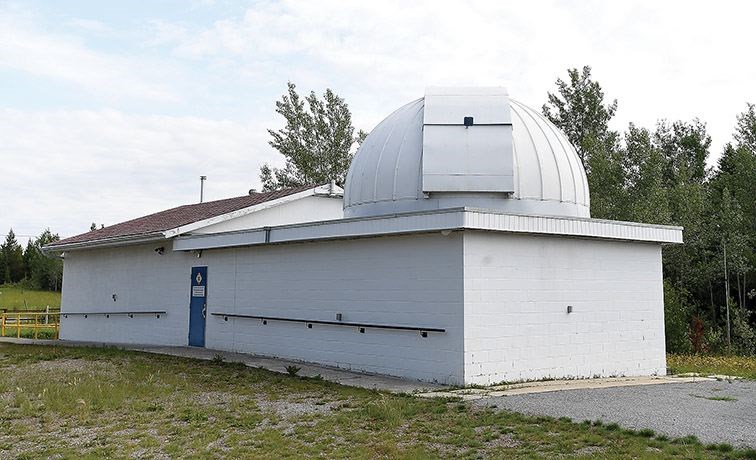Betelgeuse! Betelgeuse! Betelgeuse!
No, chanting this out loud won't conjure up a naughty spirit like in the movies but it does explain how to pronounce the name of the star that is the main topic of discussion at the first 2020 observatory open house hosted by the Prince George Astronomical Society Friday, beginning at 7:30.
The Betelgeuse star is part of the constellation Orion, named for a hunter in Greek mythology, and is a red supergiant that's been making headlines recently due to a recent drop in its brightness. It's usually the 10th brightest star in the night sky and Blair Stunder, president of the local astronomical society, said it's dropped to 23rd, which is a big change.
"So if you look at Orion we're talking about the star that's on the upper left hand corner of the constellation," Stunder said, talking about Orion's shoulder. "That's Betegeuse and that should be the brightest star in that constellation."
Betelgeuse is about 640 light years away, which means as it is seen today is a view that's about 640 years old.
Speculation that it has gone supernova, which means it has exploded, has been discussed. There is no precedent set or any other indication that when a star dims it will soon supernova.
The star does have a dim-to-bright cycle that spans about six years in its documented history that dates back to the 1800s but in the last two months there's been significant dimming that's caused it to be such an astronomical topic of conversation.
"If Betelgeuse goes supernova it will actually cast shadows at night that people can see," Stunder said. "And for a couple of months it will be visible in the daytime sky."
Most recently images from the Atacama telescope in Chile are surprising, Stunder said.
"Images show Betelgeuse has a bulge on one side right now," Stunder said. "So that really has everybody kind of scratching their heads. Did it absorb a companion star that's revolving around it? Or is it already blowing out? And even from the beginning of December to now it's dimmed a little bit more. You can tell, it's noticeably dimmer than what it should be. So if you're familiar with constellations you'll look up and it just doesn't look right."
So, that's the kick off presentation, Stunder concluded.
If the sky is clear the talk will be followed by observing with the main 24-inch telescope and smaller telescopes on the viewing deck. Viewing is weather permitting. Dress warmly.
The Prince George Astronomical Observatory is located at 7365 Tedford Rd. For more information visit www.pgrasc.org.



